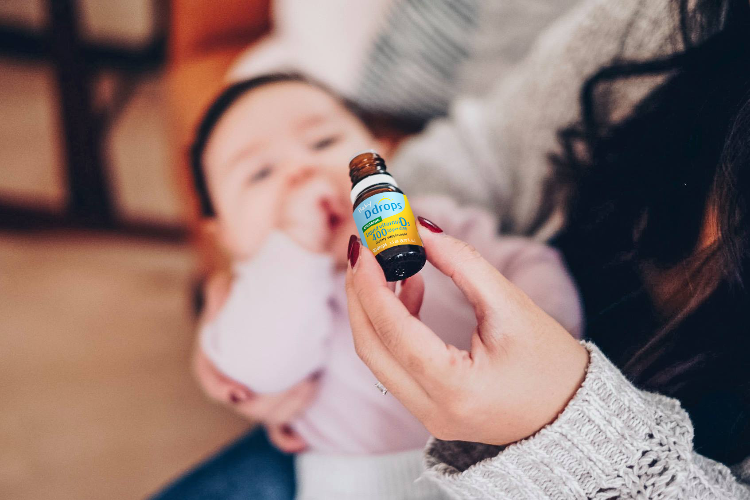18 Julai 2017
Kita semua ingat perasaan itu: loceng terakhir berbunyi, memulakan percutian musim panas. Sepanjang musim panas menanti anda untuk melakukan apa sahaja yang anda mahu, tanpa kerja rumah yang perlu dibimbangkan. Bagi ibu bapa dan kanak-kanak, perkara terakhir yang terlintas di fikiran pada musim panas ialah suplemen vitamin D. Kanak-kanak boleh mendapat banyak daripada diet mereka dan matahari, bukan? Tidak semestinya…
Kajian terbaru menunjukkan:
-
- 30-80 peratus kanak-kanak di bandar adalah rendah vitamin D.
- 70 peratus kanak-kanak dan remaja tidak mendapat cukup vitamin D.
- Lebih daripada satu pertiga kanak-kanak yang mengambil suplemen vitamin masih tidak menerima vitamin D dan kalsium yang mencukupi.
Bagaimana pula dengan cahaya matahari?
Vitamin D boleh dibuat dalam kulit apabila terdedah kepada pendedahan cahaya matahari secara langsung. Akademi Dermatologi Amerika (AAD) tidak mengesyorkan mendapatkan vitamin D daripada pendedahan matahari tanpa perlindungan kerana risiko yang berkaitan dengan sinaran ultraungu (UV) dan perkembangan kanser kulit. Keupayaan kanak-kanak membuat vitamin D daripada cahaya matahari bergantung kepada perkara berikut:
- Penggunaan pelindung matahari: Kanak-kanak (terutamanya bayi) dan mereka yang berkulit cerah dinasihatkan untuk mengelakkan pendedahan matahari secara langsung kerana risiko kanser kulit. Menggunakan pelindung matahari menghalang kulit daripada menghasilkan vitamin D.
- Masa hari: UVB atau sinaran ultraungu gelombang pendek adalah untuk penghasilan vitamin D dalam kulit. Sinaran ini paling kuat di bawah matahari tengah hari.
- Masa tahun: Sinaran matahari paling kuat pada musim panas, menurun pada musim luruh dan paling rendah pada musim sejuk. Bagi sesetengah kanak-kanak pada musim luruh dan musim sejuk, tiada vitamin D boleh dibuat atau lebih banyak masa perlu diluangkan di bawah sinar matahari untuk menghasilkan vitamin D.
- Geografi: Bagi kanak-kanak yang tinggal lebih jauh dari khatulistiwa di utara Amerika Syarikat, Kanada, United Kingdom dan Eropah Utara, sinaran matahari mungkin tidak cukup kuat untuk membolehkan vitamin D dibuat.
- Cuaca: Kanak-kanak yang tinggal di kawasan yang terdedah kepada cuaca mendung, hujan dan sejuk mungkin mempunyai pendedahan matahari yang tidak konsisten.
- Gaya hidup: Kanak-kanak mungkin menghabiskan lebih banyak masa di dalam rumah, walaupun semasa percutian musim panas. Kajian UK baru-baru ini mendapati secara purata, kanak-kanak bermain di luar selama lebih empat jam seminggu.
- Warna kulit: Kanak-kanak dengan kulit cerah perlu menghabiskan lebih sedikit masa di bawah sinar matahari untuk menyerap jumlah vitamin D yang sama seperti mereka yang berkulit gelap.
-
Bagaimana pula dengan diet?
Untuk mendapatkan 600 IU vitamin D sehari melalui diet sahaja, anda perlu mengambil:
- 6 gelas susu
- 4 tin tuna
- 1 ekor ikan bersaiz sederhana
- 20 biji telur
-
Vitamin D ditemui dalam sangat sedikit makanan, terutamanya ikan, produk susu yang diperkaya dengan jumlah surih, dalam sesetengah bijirin dan telur. Kanak-kanak mungkin perlu mengambil bahagian yang tidak realistik untuk memenuhi keperluan vitamin D mereka.
Mengapa kanak-kanak memerlukan vitamin D pula?
Keperluan untuk vitamin D tidak berhenti selepas bayi!
- Vitamin D menyokong perkembangan tulang dan gigi yang normal, dan kekuatan otot
- Vitamin D membantu badan menggunakan kalsium dan fosforus untuk membina dan mengekalkan tulang dan gigi yang kuat pada kanak-kanak.
- Pihak berkuasa kesihatan menganggap vitamin D sebagai faktor dalam mengekalkan kesihatan yang baik
Purata untuk kanak-kanak berumur sekolah 6 hingga 12 tahun akan:
- Tumbuh 2.5 inci setahun
- Dapatkan 5-7 paun setahun
Berapa banyak vitamin D disyorkan?
Cadangan Vitamin D pihak berkuasa kesihatan untuk kanak-kanak:
- Multivitamin selalunya mengandungi sejumlah kecil vitamin D, jadi sentiasa baca label dengan teliti
- Semak dengan pengamal anda tentang keperluan khusus mengenai suplemen vitamin D.
Mengapa memilih Ddrops Booster?
- Mudah: Hanya satu titisan tawar menjadikan produk Ddrops mudah diambil. Ddrops boleh dijatuhkan ke permukaan yang bersih seperti sudu atau ditambah pada makanan atau minuman.
- Pentadbiran yang selamat: Ddrops Booster ditadbir sebagai titisan terkawal dan mudah ditelan oleh kanak-kanak. Gummies dan produk kunyah tidak disyorkan pada kanak-kanak di bawah umur 4 tahun.
- Tulen: Setiap titisan Ddrops mengandungi hanya dua bahan: vitamin D3 tulen (kolekalsiferol) dan minyak kelapa pecahan. Produk Ddrops tidak mengandungi perisa tiruan, pengawet atau warna dan bebas daripada alergen yang paling biasa
- Pilihan: Pilihan dos fleksibel dengan Ddrops termasuk:
- Baby Ddrops 400 IU
- Kanak-kanak Ddrops 400 IU
- Ddrops Booster 600 IU
- Diuji: Produk Ddrops telah dibangunkan melalui penyelidikan yang meluas, ujian keselamatan yang ketat dan telah digunakan dalam ujian klinikal pada kanak-kanak
- Dipercayai: Produk Ddrops telah menerima anugerah, pengiktirafan dan pensijilan di seluruh dunia. Ddrops disyorkan oleh banyak pengamal penjagaan kesihatan di seluruh Amerika Utara
Jangan lupa vitamin D musim panas ini! Ia sentiasa idea yang baik, tidak kira masa dalam tahun, untuk bercakap dengan pengamal penjagaan kesihatan anda tentang suplemen vitamin D untuk anak-anak anda.





Tinggalkan komentar
Situs ini dilindungi oleh hCaptcha dan berlaku Kebijakan Privasi serta Ketentuan Layanan hCaptcha.